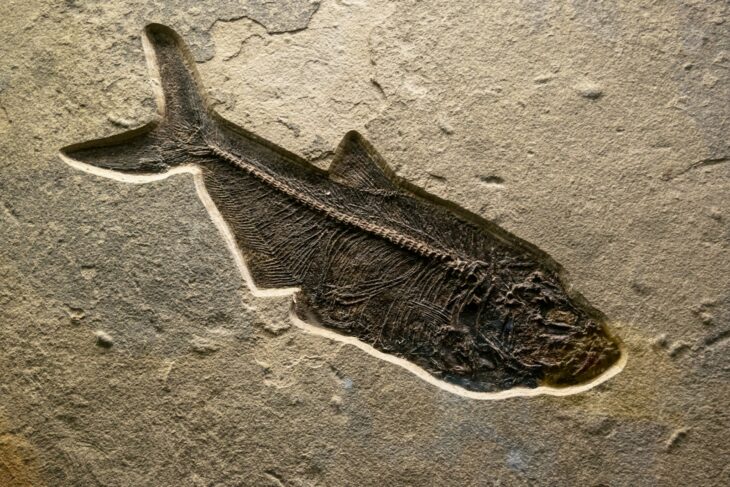Think about the last time you put together a puzzle. How long did it take to connect the first pieces? Did you go for the edge pieces or look for random pairs? Now, imagine those puzzle pieces were fossils of marine creatures that lived in ancient oceans. How would you fit those pieces together? Which animals came first, and how long did they live for? That’s the ‘puzzle’ that paleontologists encounter when studying the fossil record.
Researchers who study the fossil record have shown at the end of the Permian period, 250 million years ago, a mass extinction event nearly emptied the oceans. They’ve proposed that hot global temperatures and chemical changes in the water wiped out 80% of ocean life, marking the end of the Paleozoic Era. Sometime later, during the subsequent Triassic period, ocean communities reformed with diverse creatures similar to those found in the ocean today. Thus, scientists consider life in the Triassic oceans to be the predecessor of modern marine ecosystems.
Paleontologists originally thought marine animals recovered from this extinction event slowly, since they hadn’t found complex fossil ecosystems until a full 10 million years later. More recently, researchers discovered fossils of diverse marine animals only 3 million years after the event. Yet, these investigations still left a 3-million-year-long gap between the mass extinction and the appearance of modern-like ocean life in the earliest Triassic.
An international team of researchers hypothesized a collection of fossils in south China, called the Guiyang Biota, could help fill this gap. These ancient animals were blanketed in deep ocean sand, forming a layer of exceptionally well-preserved fossils called a lagerstätte. Lagerstätten often form in calm seafloor environments where bones and even delicate animal parts like scales can be preserved. Based on their location and position in the rocks, the team proposed the Guiyang fossils were from the early Triassic period.
The scientists explained the fossils at this location included animals from all 5 levels of the food chain, including 10 species of bony fish, 2 species of shrimp, lobsters, sponges, eels, and plankton. They found the fish ate the lobsters, the lobsters ate the clams, the clams ate the plankton, the plankton ate the algae, and the algae provided an energy base, forming a complete, modern-like ocean community. They suggested that these fossils could be younger than the oldest diverse fossil ecosystems scientists had previously unearthed from the early Triassic.
The researchers used 3 methods to determine how old the Guiyang fossils were. First, they examined the teeth of eel-like creatures, called conodonts, that lived only during specific periods in Earth’s history. They found the conodonts’ teeth in the south China fossils belonged to Triassic-age conodonts, supporting their original age estimate.
Second, the researchers measured chemical signals, called carbon isotopes, in the rock wall surrounding the fossils. Scientists have measured carbon isotopes in rocks throughout Earth’s history. Researchers can estimate the age of a rock by matching the rise and fall of its carbon isotopes to the pattern of carbon isotopes at different times in the rock record. They found the carbon isotopes in the Guiyang rocks matched the pattern of carbon isotopes in early Triassic rocks, further supporting a Triassic date for the fossils.
Finally, the researchers needed to establish an exact age for the Guiyang rocks, to determine how quickly the fossil community developed after the mass extinction event. They used a dating method based on the radioactive decay of uranium to lead, called U-Pb dating, in minerals from 2 volcanic ash layers in the rock wall.
The team explained that these ash layers were located just below and just above the fossil layers in the rocks, meaning they fell shortly before and shortly after the fossils formed. According to the U-Pb dates, they found the fossils were between 250.79 and 250.92 million years old. They interpreted these ages to mean the sea creatures lived only 10,000 to 1 million years after the extinction event 250 million years ago.
The researchers concluded from these Triassic lagerstätte fossils that marine ecosystems recovered rapidly from the end-Permian extinction and reformed a complete food chain within 1 million years of the mass extinction event. The researchers proposed that this diverse community thrived during a cool period in an otherwise warming Triassic environment. They suggested future researchers test whether a briefly cooler climate interval allowed these creatures to survive the heat or if other factors, like favorable ocean chemistry, were involved.


